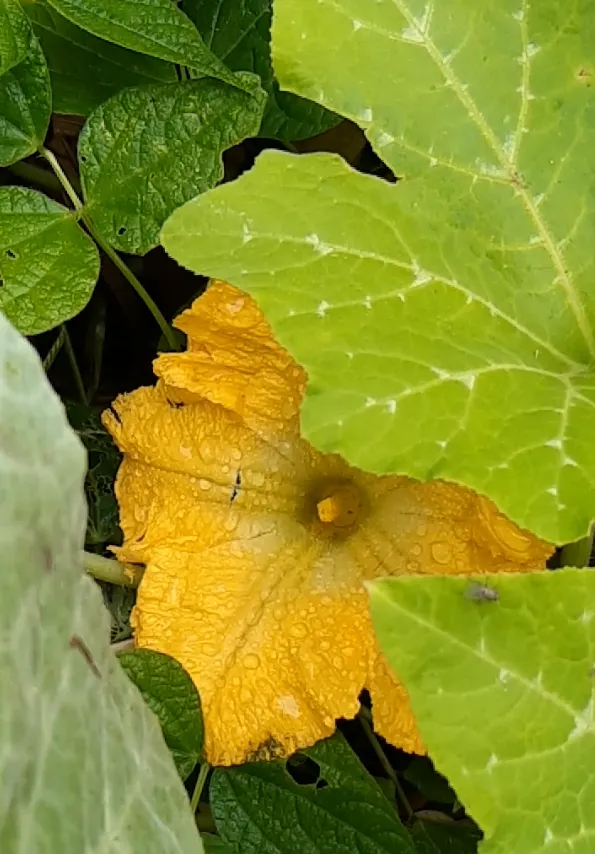
THE GARDEN QUESTION 22
<<🏝️ You're on a desert island ☀️
🐟 You have protein - there's chicken and fish, and wild pigs and someone even spotted four cows on the other side of the island 🐄
🌴 What three plants would you grow in addition to the coconuts that OF COURSE grow on a desert island? 🥥>>
This question is very interesting, and of course, it has already happened to humanity, to the point that I read that fewer than ten plant species have been the pillars of all civilizations throughout the ages (rice, corn, wheat, for example)

----- by FaunoBrujo -----
***
[ Farming Aura ]
Amidst so much cement and war, I sometimes wonder how it would have been possible to evolve into a civilization dedicated solely to caring for the world. To preserving nature in its purest state. I find it hard to abandon utopias... | |
|---|---|
But I'll take this opportunity to bring it down to a micro level: my home. Since I find myself in a metaphorically similar situation (being able to get protein) and having green space available, this year it would be a huge step forward to stock up on some fresher, healthier organic fruits and vegetables. I'm about to start my first garden in my backyard, and I was wondering, what would be the essential plants?
The Incas in the Americas used this very beneficial combination. I've read a little about it, and this is what I want to do this season in my home, and I would also do it on a desert island. The EssentialsAssuming a favorable, temperate, or slightly warm climate, I would choose to find an area with direct sunlight, fertile black soil, next to or very close to a source of fresh water. | First 🌽With the ground fish bones and some other vegetables, I would make compost and bury it in a hole 30 centimetres deep. Then, I would place a seed of corn or sweetcorn on top. Water it every day for 15 days, waiting for it to germinate and reach 15 cm in height. Second 🫛Now I would plant three more seeds of beans, peas, green beans, or broad beans around that sprout. These are climbing plants that will use corn as a support. From the first few days, we'll wrap it around the pumpkin to take advantage of the synergy between the two plants, and we'll water it this way for another 15 days. Third 🎃Now it's time to plant one or two pumpkin seeds around the other seeds we already planted. This way, the pumpkin will occupy the lower spaces, being a trailing plant, covering the soil and preventing it from drying out and retaining moisture for longer. |


Harvesting:With this system, you don't need to do much more since the three types of plants work together, benefiting each other and producing a larger yield with less effort. And with less water, even in smaller spaces, you'll obtain more varieties. It's a success from every point of view, and although I've only tried it once in my life, I didn't know the exact cutting point for each of the vegetables, and I made a mistake by letting them overgrow. This year I'm going to repeat the formula and hope for better results. | 😘 Thank you for joining me this far, and thank you to everyone in the Garden Hive community for allowing me to participate. I want to give you all a big hug. I hope you have a wonderful day.My name is Juan Pablo, I'm from Cordoba, Argentina. I'm passionate about sacred and medicinal plants. My dream is to have a garden of perfumes awakening with every rain, aromatic plants everywhere. Flowers in shades of pink. Embrace change💚 |

